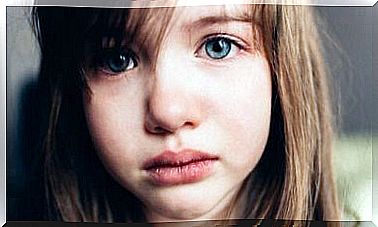Post-traumatic Growth: Learn From Your Pain

When life goes well, be thankful and rejoice in it. When it’s sour, be thankful and try to evolve. Gratitude for all the circumstances, both the good and the bad, is the cornerstone of feeling whole and finding true happiness. Even situations that can cause pain deserve gratitude as they form the basis of intellectual, emotional, and spiritual growth. It is called post-traumatic growth.
Painful and difficult situations are an energy-rich breeding ground for personal development. Suffering can set in motion a significant change and create an improved version of yourself. This is called post-traumatic growth.
“The meaning of life is to give life meaning”
–Ken Hudgins–
What is post-traumatic growth?
In the mid-90s, Richard G. Tedeschi and Lawrence G. Calhoun researched post-traumatic growth using a post-traumatic index. It turned out that 90% of the people who had had a traumatic experience – and the pain it entails – have at least one sign of post-traumatic growth.

Tedeschi and Calhoun defined post-traumatic growth as a positive psychological change arising from adversity and challenge. It aims to achieve a better level of functionality.
Trauma challenges a person’s ability to adapt, become wiser in the world and face pain and loss. These circumstances contribute to a violent process of personal change.
The five pillars of the post-traumatic index are:
- A desire to be open to new opportunities that were not available or seem possible before.
- A greater sense of attachment to others, manifested in an increase in empathy for other people’s suffering.
- A greater sense of self-sufficiency. The feeling that if they have been able to overcome this, they can overcome everything.
- An increased gratitude for life in general, as well as appreciating things that were previously taken for granted.
- A deeper sense of spiritual connection or meaning, which may include a shift in or a redefinition of one’s belief system.
Causes of post-traumatic growth
Post-traumatic growth occurs when a person tries to adapt to the very negative circumstances that can eventually lead to a high degree of anxiety.
Growth does not happen as a direct consequence of trauma, but as a consequence of a struggle with the aftermath of a trauma. This impact is crucial in determining the degree of post-traumatic growth.
Some conditions are indicative of post-traumatic growth and are associated with a better level of adjustment after being exposed to a trauma. Spirituality has been shown to correlate with post-traumatic growth. In fact, the deepest belief in the spiritual is the result of a trauma.
Social support is a well-documented relief for mental illness and stress. When we talk about post-traumatic growth, it is not only about having been exposed to a high level of social support in the past, but there is also neurobiological evidence that backs up that social support can regulate a potentially pathological response to stress.
It also turned out that the ability to accept situations that cannot change is crucial to being able to adapt. This is a significant indicator of post-traumatic growth.

Summon your inner superhero
We all know the stories of people who have become stronger and have found the meaning of life after a terrible tragedy. In fact, it is in this way that the greatest heroes of reality and fiction have come into being.
For example, if you wrote a list of fictional superheroes, most would probably include Superman, Batman and Spiderman. Batman and Spiderman lead crusades against crime as their loved one is murdered. Superman is hit by a different kind of tragedy, but his film character gives us a lot more to talk about if we think about the story of the actor who first had the role of Superman.
Christopher Reeve, the first Superman on film, was paralyzed after a riding accident, a tragedy that made him consider committing suicide (oh, the irony of life). But Reeve summoned his inner Superman, and with the same determination that his film character also displayed, he became one of the biggest advocates for people with spinal cord injuries.
This is just one of the many examples of how a severe limitation, illness or loss can lead to an inner revolution. These tragic events are like earthquakes that throw with the contents of your head. But with this new life experience, you can put it all back in place again and with much more security.









